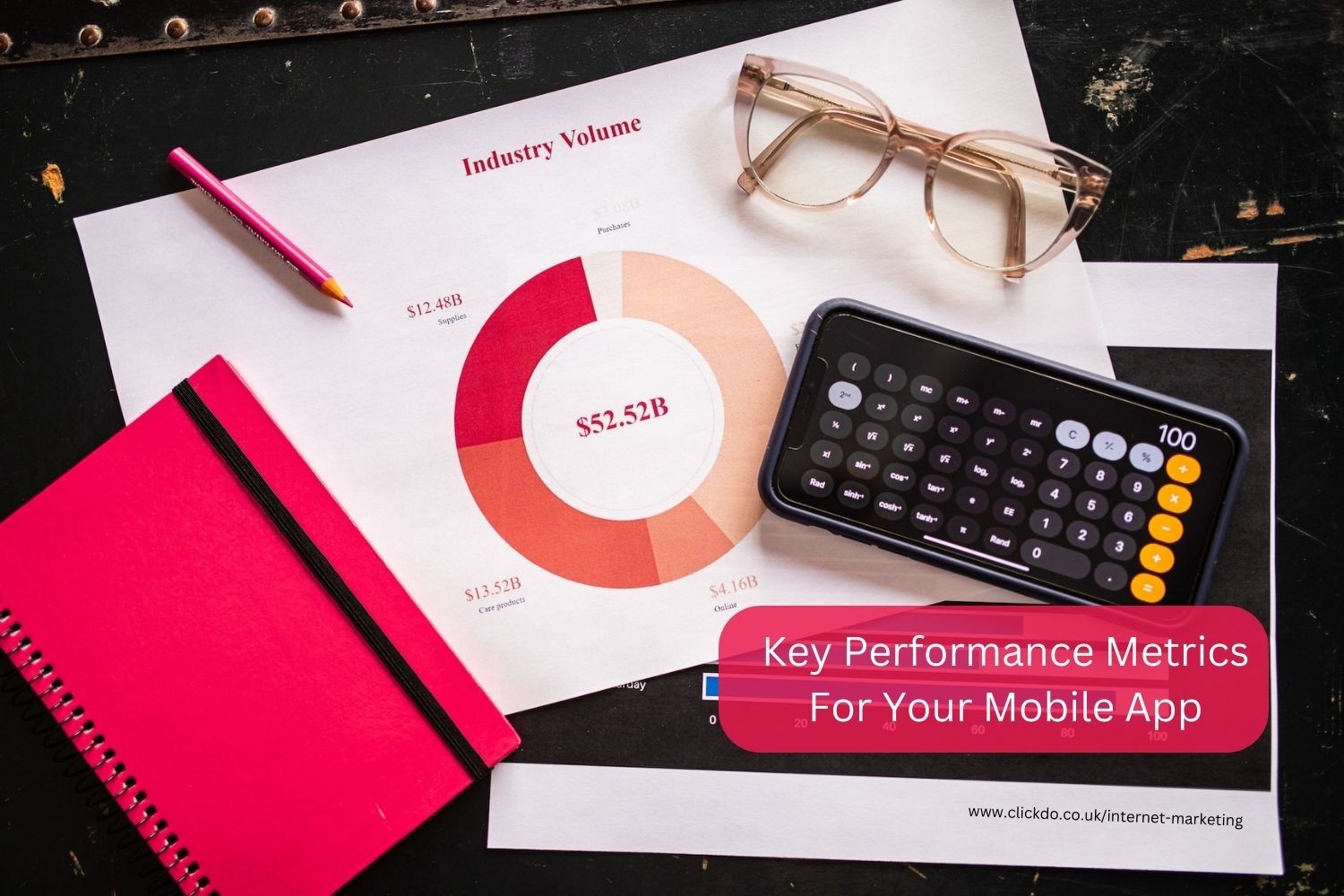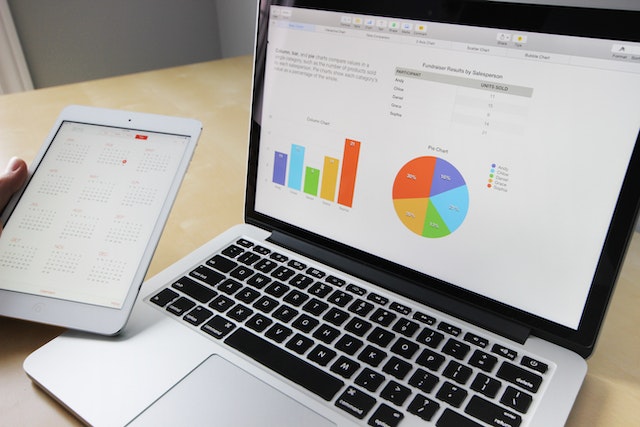
4 Key Performance Metrics For Your Mobile App
Launching an application could be exciting and interesting in today’s world that is anchored to digital media. But the mobile application competition out there is strong. It makes it difficult for one to understand if the app is a success or not.
Analyzing some crucial app metrics revolving around the app development, performance, and user base helps understand its progress. Among the many available metrics, here are four critical aspects to watch out for to track the success of an app.
1. The App Users And Their Usage
The total number of people who download the app directly indicates the interest in the service enabled by the app from the user base. The total download count also influences content marketing strategies and technical decisions.
Evaluating the number of app downloads over a period helps to understand the best channels for advertising. Also, it helps to predict the increase in engagement in the future and plan the server’s needs to ensure a smooth experience for users.
 Monitoring app metrics like k-factor and the daily and monthly increase or decrease in downloads and active users helps highlight the app’s success among users who downloaded it. This metric gives an insight into whether the users are increasing, decreasing, or simply stagnant, which impacts your digital marketing.
Monitoring app metrics like k-factor and the daily and monthly increase or decrease in downloads and active users helps highlight the app’s success among users who downloaded it. This metric gives an insight into whether the users are increasing, decreasing, or simply stagnant, which impacts your digital marketing.
Understanding the geographic distribution of the user base is yet another crucial metric. It helps to identify issues faster and rectify problems to approach a larger user base.
The type of device used for downloads is helpful to evaluate the usability of the app as well as profitability. In many cases, user retention falls low due to low engagement. It could be the lack of a seamless user interface.
 For example, the features of an app developed natively for android phones may not be always compatible with a tablet view. While it is clear from the study that apps are mostly used through smartphones, tablets are not far behind. It means that the app should keep in mind the adaptability to larger devices to give a good experience.
For example, the features of an app developed natively for android phones may not be always compatible with a tablet view. While it is clear from the study that apps are mostly used through smartphones, tablets are not far behind. It means that the app should keep in mind the adaptability to larger devices to give a good experience.
A study from 2004 also shows that 94% of the first impression created by an app is design related. Complex or flawed designs in different platforms mean the chances of losing out users are high.
2. App Performance
The performance metrics of the app are essential to determine the ease of interaction of the user. It also influences the costs that could incur to improve performance. It is also essential to know the difference between flutter vs native for mobile app development before testing the app’s performance.
App crashes are a basic metric to understand the technical capabilities of the app. It is a measure of the average number of crashes per app load. The value could be between 1-2% based on the stage of the app. High app crashes could reduce user retention.
 App Load Time or Period refers to the number of transactions that occur on the application over a period. It helps to evaluate the performance of the app during a sudden increase in the load. Some apps, for example, food delivery apps, might face spikes in load during certain times of the day. But the capabilities of the app need to accommodate the spike without degrading performance.
App Load Time or Period refers to the number of transactions that occur on the application over a period. It helps to evaluate the performance of the app during a sudden increase in the load. Some apps, for example, food delivery apps, might face spikes in load during certain times of the day. But the capabilities of the app need to accommodate the spike without degrading performance.
Network problems or errors include HTTP errors or service provider errors for online apps. These issues can influence the performance of the app as well as lead to app crashes. For apps that are network dependent, this is a critical performance metric.
Similarly, latency, end-to-end application latency, and API latency are essential metrics. The round-trip time cannot be higher than 1 second. While users may have tolerance to latency issues, in the beginning, it could cause them to drop out or abandon the app, says a report.
For example, if the user is working with a shopping app and the response time for the transaction is more than 5 seconds, the user may not prefer to use it again.
3. User Engagement
User engagement metrics help to understand the user experience with the app. It gives an idea about the changes that might be necessary to gather interest and attention from the user base.
Session length or the total time a user spends in the app indicates the user’s interest to use the app every time they open. The longer the session, the higher the interest in the application. Similarly, the Session interval determines the time between two visits to the app by the user. When the frequency is higher, it means that the app is captivating to its user base.
 For example, if the user sessions are longer for a shopping app, they get to explore the many offerings or scan thoroughly through interesting products. Similarly, an increase in the frequency of visits indicates interest to explore or buy from the collection.
For example, if the user sessions are longer for a shopping app, they get to explore the many offerings or scan thoroughly through interesting products. Similarly, an increase in the frequency of visits indicates interest to explore or buy from the collection.
Screen flow tracks the patterns of user interaction with the different screens in an app. It helps to analyze the most engaging pages for the users and those that cause the highest exit rates.
Let us take the example of a shopping app. If the users tend to exit while navigating to the stylizing ideas page, it could mean that it does not interest users. It could also mean that the page could use a design change for better interaction with users.
Retention rate talks about how many users return to using the app after the first download or visit.
Statistics show that users engage more than 77% of the time only in the top three apps of interest. It highlights the value of the app and helps to build strategies to retain or engage users.
show that users engage more than 77% of the time only in the top three apps of interest. It highlights the value of the app and helps to build strategies to retain or engage users.
Studies show that applications that offer live chatbots or interaction with customer care increase retention rates by almost three times.
4. Marketing and Revenue
Marketing metrics help to understand the potency of different channels and how they contribute to the growth of the business. The right strategies in each channel help to captivate the audience.
For example, pillar pages can be beneficial to improve the SEO value of the content. A basic understanding of what is a pillar page and how one can use it to give a broad view of the service provided by the app to attract users can add value to digital marketing efforts.
 Basic customer acquisition costs include the many media one might choose to advertise the app. It could be through word of mouth, campaigns, ads on digital platforms, or in-app referrals. Understanding the Cost Per Installation helps to segregate the channels that offer the most benefits.
Basic customer acquisition costs include the many media one might choose to advertise the app. It could be through word of mouth, campaigns, ads on digital platforms, or in-app referrals. Understanding the Cost Per Installation helps to segregate the channels that offer the most benefits.
For example, assume the total spending on an advertisement over one month is 100$ for a particular channel. The total number of downloads influenced by the channel over this period is 500. Then the CPI or cost per installation is ((100/500)*100) = 20$. It is a focused metric that helps to understand the effectiveness of each advertising channel to get better value from paid ads.
Customers paying capacity is also critical to know the right places to expect returns. Above mentioned study shows that Apple users show more interest to purchase apps compared to android. This information can aid in crucial business decisions such as business models.
 Transaction revenue is a strong metric that indicates the value of transactions over the medium. While it is much more relevant to eCommerce apps, other applications can calculate an approximate value.
Transaction revenue is a strong metric that indicates the value of transactions over the medium. While it is much more relevant to eCommerce apps, other applications can calculate an approximate value.
Lifetime Value is yet another revenue metric that shows the value of monetization possible from a customer for as long as they use the app. It projects the growth and expansion potential of the business.
Of course, there is one other gold standard to reach out for, and that is app rating in the store.
A high rating induces interest and impresses more users to increase the potential for growth.
Each of these metrics contributes to evaluating the business as well as the technical success of the app. This data could help improvise, change, and connect better for the growth of the business.
Author Profile
- As the Chief of Marketing at the digital marketing agency ClickDo Ltd I blog regularly about technology, education, lifestyle, business and many more topics.
Latest entries
 Digital MarketingMarch 25, 2025Why SEO is a Must for Modern Marketing
Digital MarketingMarch 25, 2025Why SEO is a Must for Modern Marketing Digital MarketingMarch 10, 2025Beyond SEO: How Search Data Powers Market Research and Trend Analysis
Digital MarketingMarch 10, 2025Beyond SEO: How Search Data Powers Market Research and Trend Analysis Digital MarketingMarch 6, 20258-Step Guide to Crafting a Winning Marketing Strategy for Your Small Business
Digital MarketingMarch 6, 20258-Step Guide to Crafting a Winning Marketing Strategy for Your Small Business Digital MarketingFebruary 25, 2025How Tailored SEO can Drive Traffic Across Various Industries
Digital MarketingFebruary 25, 2025How Tailored SEO can Drive Traffic Across Various Industries

